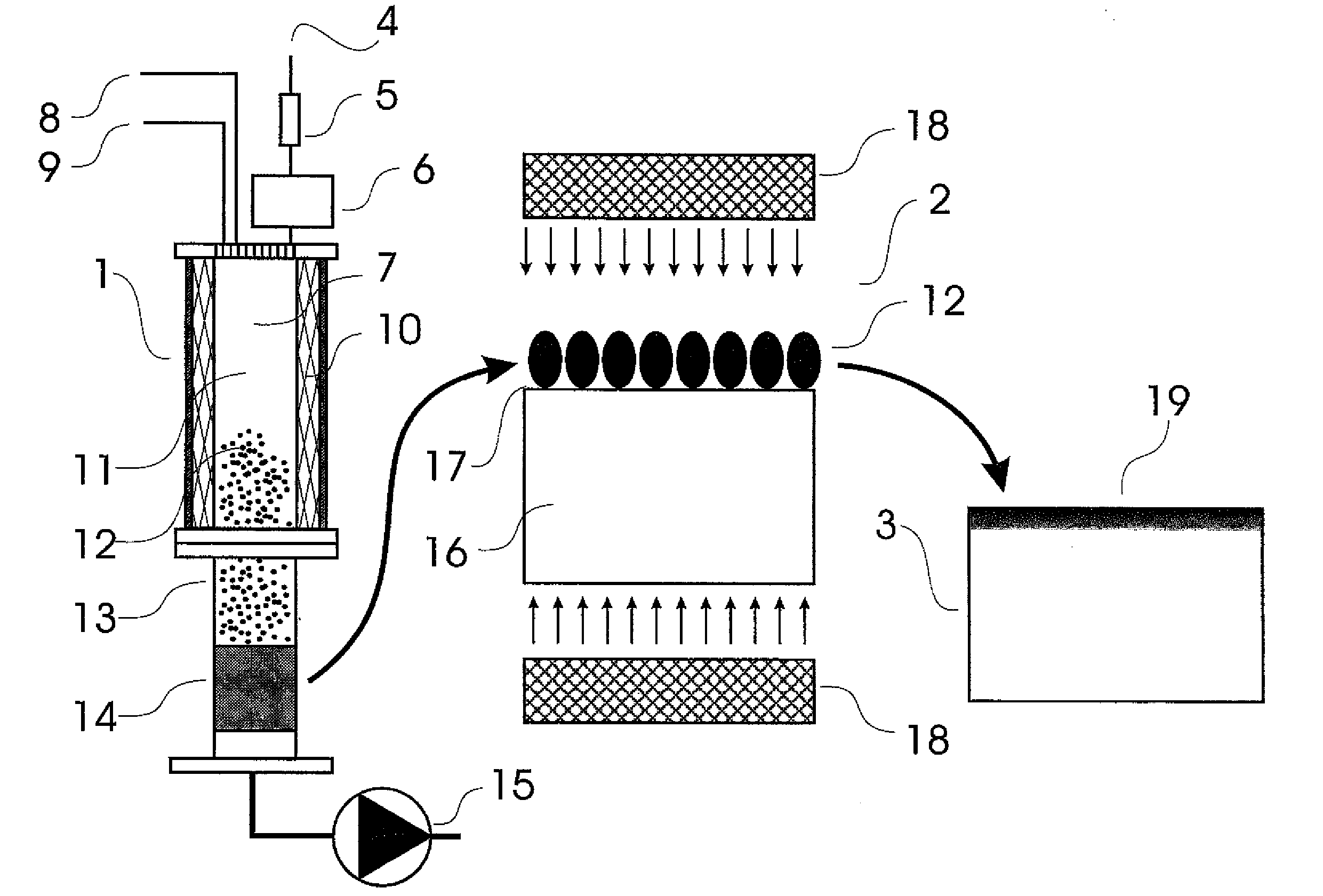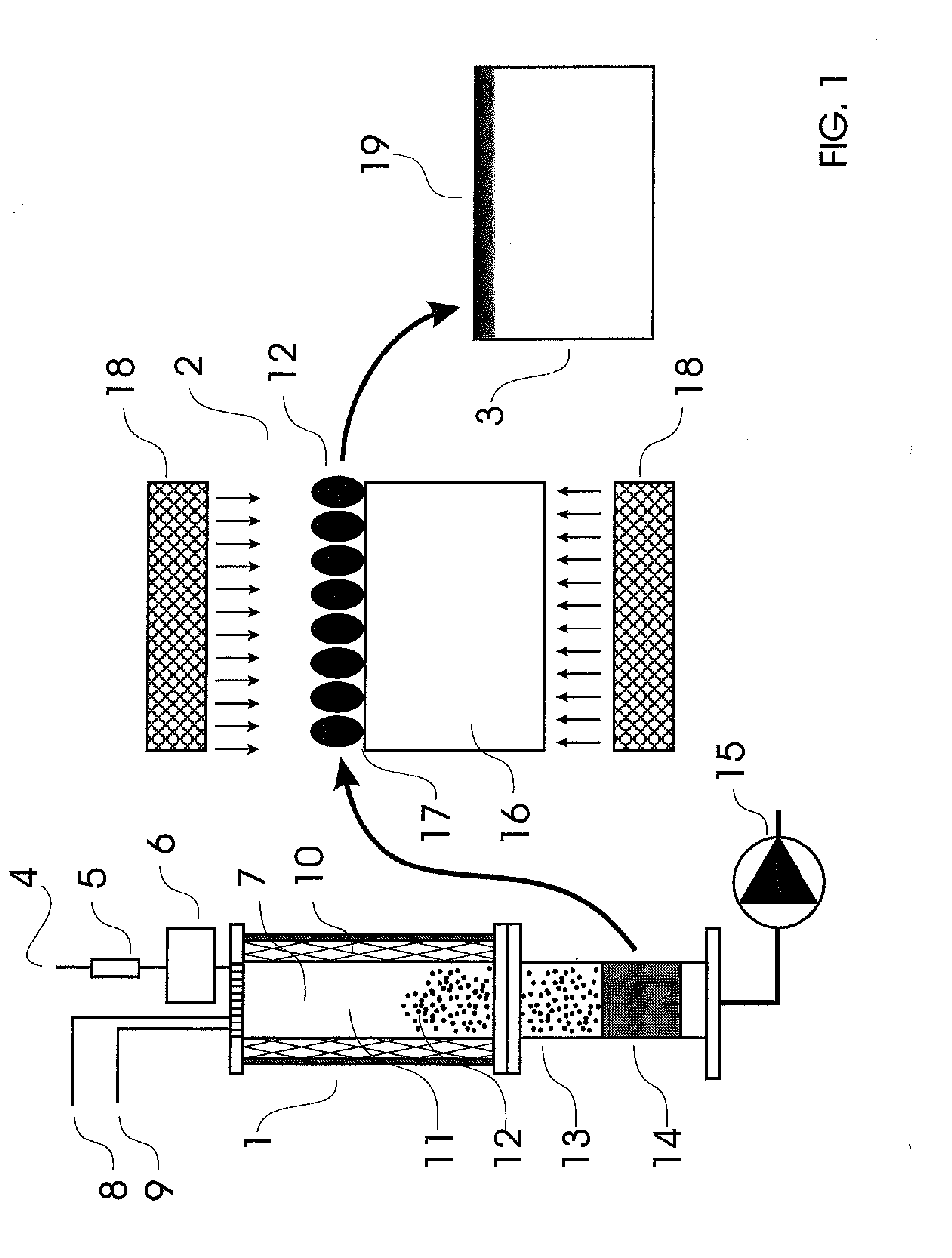Method for producing functional glass surfaces by changing the composition of the original surface
- Summary
- Abstract
- Description
- Claims
- Application Information
AI Technical Summary
Benefits of technology
Problems solved by technology
Method used
Image
Examples
Embodiment Construction
[0106]FIG. 1 illustrates a system for forming nanoparticles, transferring them on a glassy surface and diffusing / dissolving the nanoparticles into the glassy surface. The system comprises a nanoparticle formation sector 1 and a deposition section 2 and the outcome from the system is an object 3 with a modified glassy surface 19. Precursor feeding gas 4 is passed through a mass flow controller 5 into a precursor chamber 6 from which the precursor is fed into the hot reaction chamber 7. Additional gases which may take part in the nanoparticle formation reaction are fed into the chamber 7 through gas lines 8 and 9. The walls of the chamber 7 are equipped with heaters 10 which provide the thermal energy necessary for the reactions. The gas atmosphere 11 in the chamber 7 is adjusted so that the nanoparticles 12 born in the chamber 7 do not have a stoichiometric composition, i.e. in general the oxide nanoparticles 12 born show a composition MxO(y-z), where z=0 . . . y. the non-stoichiomet...
PUM
| Property | Measurement | Unit |
|---|---|---|
| Temperature | aaaaa | aaaaa |
| Diameter | aaaaa | aaaaa |
| Diameter | aaaaa | aaaaa |
Abstract
Description
Claims
Application Information
 Login to View More
Login to View More - R&D
- Intellectual Property
- Life Sciences
- Materials
- Tech Scout
- Unparalleled Data Quality
- Higher Quality Content
- 60% Fewer Hallucinations
Browse by: Latest US Patents, China's latest patents, Technical Efficacy Thesaurus, Application Domain, Technology Topic, Popular Technical Reports.
© 2025 PatSnap. All rights reserved.Legal|Privacy policy|Modern Slavery Act Transparency Statement|Sitemap|About US| Contact US: help@patsnap.com



